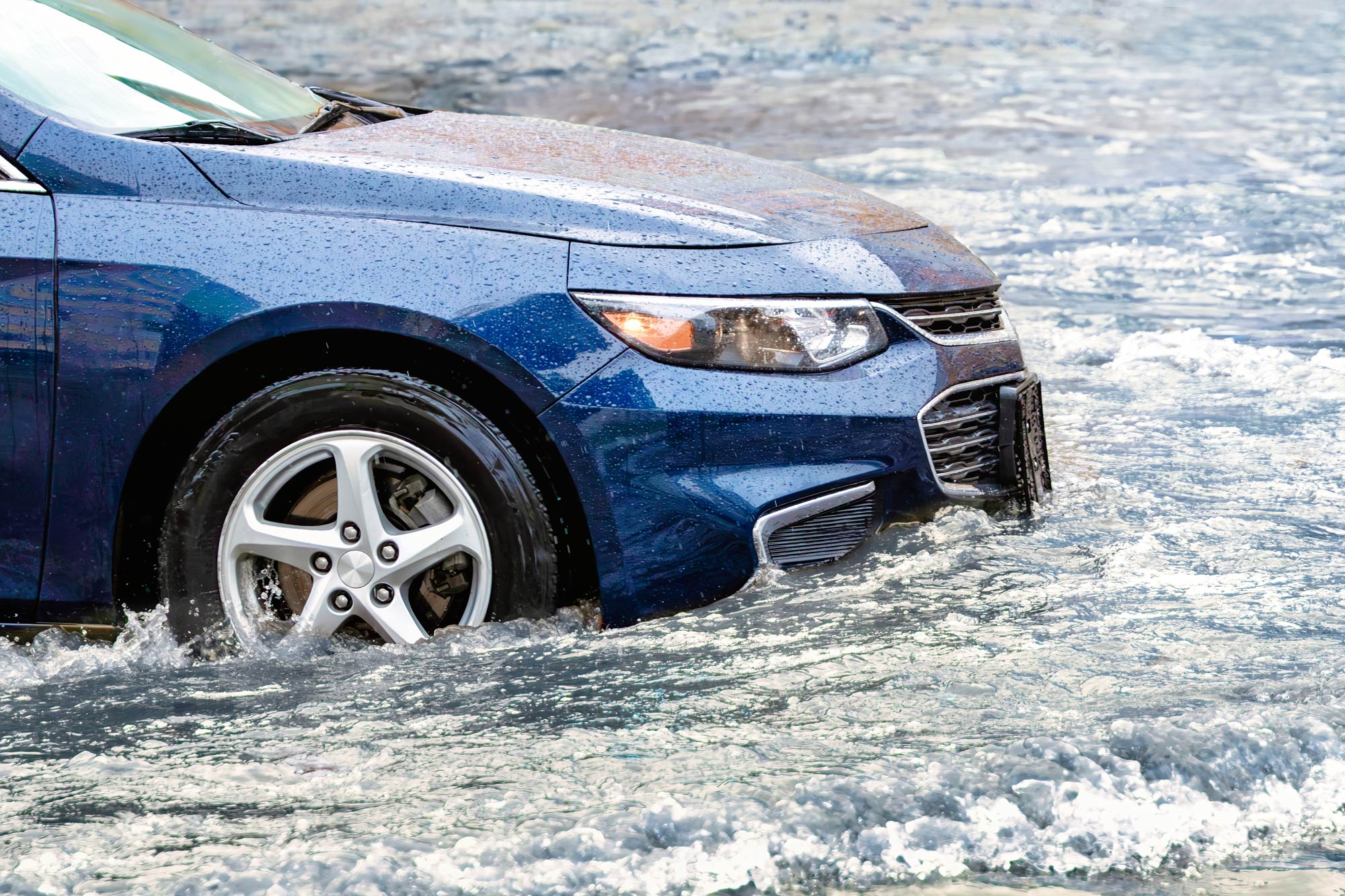What to Do After Driving Through Deep Water
You're not in the clear once you've escaped the flooded area.
 Shutterstock
Shutterstock
Hurricanes, tropical storms, and extreme rainfall events can result in rising floodwaters that inundate roads and parking lots without warning. It may happen that you find yourself unable to avoid driving through water deeper than your vehicle's ground clearance. If this takes place, there are steps you can take to minimize safety risks and long-term vehicle damage.
What to Do Immediately After Driving Through Deep Water
The danger to you and your vehicle isn't over once you escape a flooded area. One of the most immediate threats that can destroy your car's engine in such conditions is hydro locking, in which water is drawn into the engine's cylinders through the air-intake system and — being incompressible, unlike air — causes damage to the engine's internal components in a hurry.
Even if your engine manages to evade this catastrophe — engine air intakes tend to be located high up in the engine compartment to prevent just this occurrence — floodwater and the substances suspended in it can ruin everything from lubricants to bearings to sensitive electrical components. For these and other reasons, shut off the engine the moment you get the vehicle to a safe location.
If it is safe to do so immediately after stopping, document the areas of the vehicle that may have suffered damage during its aquatic excursion. Careful notes and photographs may prove helpful when determining which repairs are needed, as well as when negotiating with insurance companies over repair costs.
Determine which interior components may have been exposed to water and to what extent. Be sure to write down any electrical and/or mechanical malfunctions you noticed while the car was running.
Get Your Vehicle to a Repair Facility
Any water that may have been sucked into the engine's air intake or forced its way into vulnerable components will remain after the ignition is shut off, so your vehicle will need to be towed to its next location.
It may take some time to get a tow truck to your car's location during a natural disaster, but attempting to drive the car under its own power is not worth the risk of further damage.
Have Your Vehicle Inspected by a Professional
With so many potential problems that can crop up with a water-damaged vehicle, you'll need to get a professional to take a look at yours and also go over your notes and photographs.
If there is a repair shop in your area that specializes in water-damaged vehicles, it would be wise to get your car towed there. If not, mechanics at any competent repair shop should know what to look for and how to deal with water damage. A shop that specializes in your type of vehicle is likely to know its most vulnerable points and how to go about checking them.
Written by humans.
Edited by humans.
 Murilee Martin
Murilee MartinMurilee Martin is the pen name of Phil Greden, a Colorado-based writer who appreciates Broughams d'Elegance, kei cars, Warsaw Pact hoopties, and the Simca Esplanada.
Related articles
View more related articles